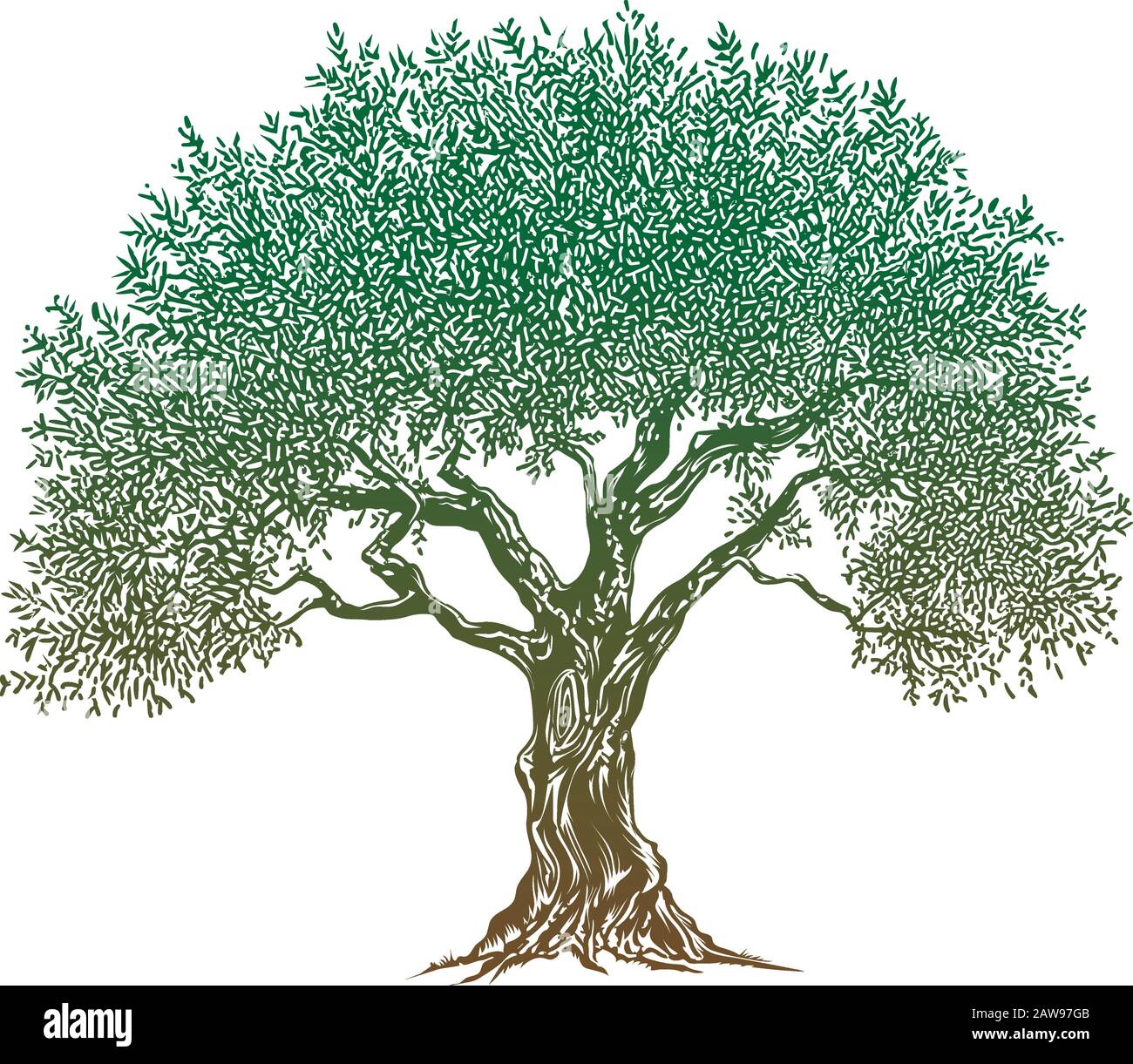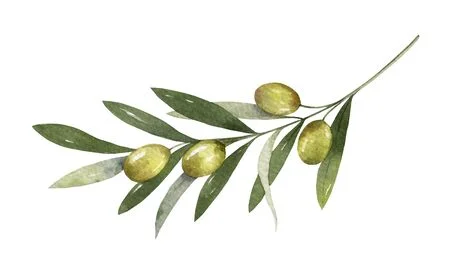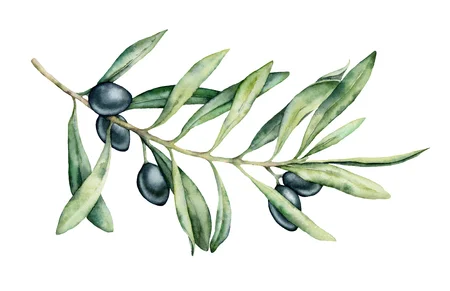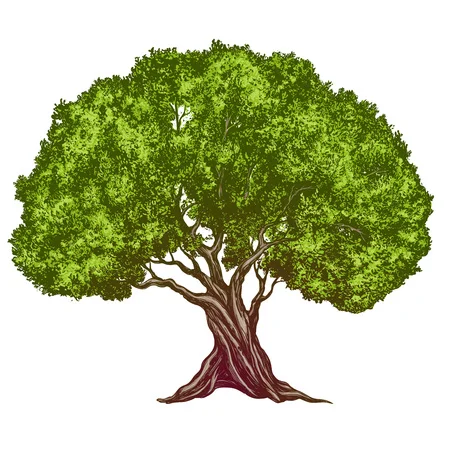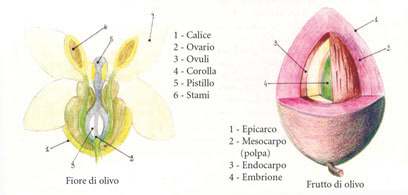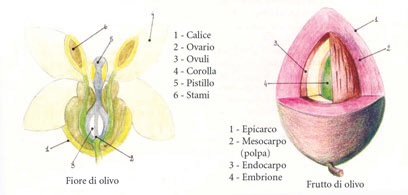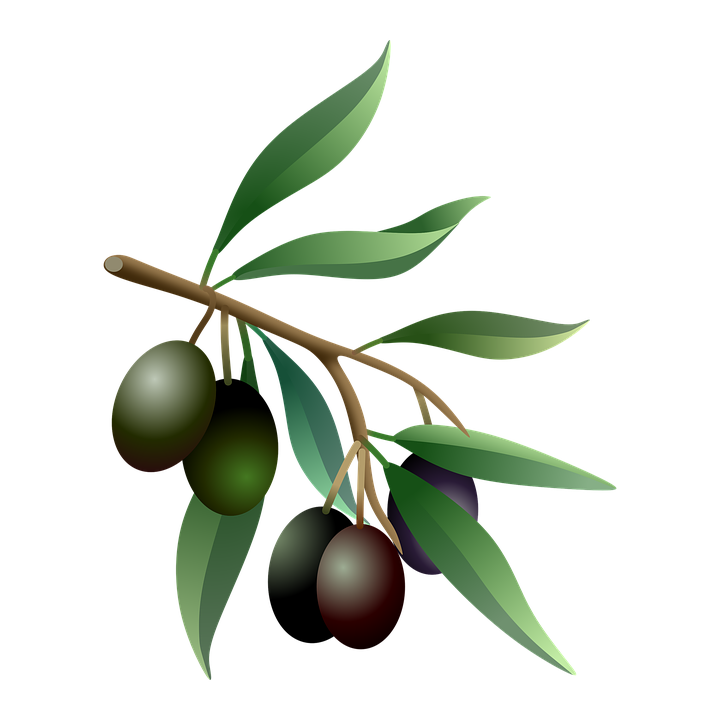The olive tree is a species that characterizes the Mediterranean landscapes; it seems that it arrived from Africa in the Pliocene era. In Italy it is extremely widespread; the only areas where it is not present are the mountains and the Po Valley.
For millennia he has been linked to man for various reasons. Sophocles described the olive tree as 'the sweet silver nurse' meaning it is present in every act of human life. The plant has always been a symbol of peace and life that is renewed.
It’s an evergreen species, and it can’t stand harsh winters. It needs slightly humid soils and prefers dry and sheltered hilly areas. It proves to be very long-lived and it is not rare to find plurisecular individuals. The height of the plant can vary a lot depending on how it is managed.
The trunk is grey-green and smooth until the tenth year, then becomes dark and gnarled, with deep and twisted grooves. The fungi often cause the internal decay of the trunk so as to make it hollow.
The olive tree has lanceolate leaves, coriaceous, long on average from 5 to 8 centimeters; their color is glaucous green and are covered by a waxy cuticle that limits water losses in summer.
The flower of the olive tree is hermaphrodite, that is, it has both male and female organs. The flowers at the beginning flatten out like small buds and are grouped in inflorescences similar to small clusters, the so-called 'mignole'. The phase of the 'mignolatura' follows the actual flowering; this can take place between the end of April and the month of June. The fecundation is anemophilous, that is, it happens through the wind.
The fruit is an oval-shaped drupe. It is formed by the epicarp (peel), the mesocarp (pulp) and the endocarp (core). The pulp is the part that contains the oil. This is inside the cells and in the intercellular spaces. As it matures, the color of the olive changes from intense green, to violet, to vinous-red, to raven-black. At the same time as the color change, there is the 'inolizione', that is, the accumulation of oil in the pulp. Olives can be harvested between October and December.
Alternate vintages with abundant fructification and reduced vegetative activity (charge) followed by years with scarce fructification and excess of vegetation (discharge).
In the young plants the root system of the olive tree is taping, then gradually develops a series of roots from the zone separating root and trunk which grow in a thickness of soil between 50 and 60 cm deep and occupy a large surface of soil.
The species Olea europaea includes two subspecies: Olea europaea sativa and Olea europaea oleaster. The oil cultivars belong to the first, while the second is the wild form typical of the Mediterranean, called Olivastro. The latter has a more shrubby posture, twigs sometimes quadrangular with thorns and leaves of reduced size; it also produces small fruits.
It is believed that from the wild form the domestic form was selected in an area between Palestine and the Caucasus; the ancient cultivators would have identified and multiplied plants suitable to meet their needs. The determining factor for 'domestication' was, probably, the ability of suckers to recreate new plants if carefully detached and replanted. Thanks to these rudimentary cultivation practices has come to life the cultivation of the olive.
The olive tree would naturally have a shrubby shape but is grown as a tree keeping only one of the stems that originate at the base from the stump. This over the years becomes a trunk.
It took millennia of coexistence with man to get to the production of oil. This probably begins in the second millennium B.C. in the eastern Mediterranean; at the beginning of the first millennium B.C. the cultivated olive tree and the oil had reached all the shores of the Mediterranean.
It is the Greeks who spread the cultivation of olive trees in southern Italy while in central Italy this happens instead thanks to the Etruscans. It would have been the Carthaginians to discover the multiplication of the olive tree by grafting on the oleaster plants. The Romans then understand the potential of this plant for the enhancement of the conquered territories so much so that between the second and the fourth century A.D. the area of the olive tree ends up coinciding with the borders of the empire. The oil becomes a very popular product (it was mainly used for body care, hygiene, cosmetics and to feed the lamps) so the loads of jars or amphorae go to fill the holds of the ships.
With the fall of the Roman Empire the oil trade suffered a sharp decline; this resumed a climb only in the eleventh and twelfth centuries by the Genoese and Venetian merchants, giving life to the cultivation areas in Italy. After 1300, oil became an indispensable product and, within two centuries, olive groves developed with extensions never known. The real push to the cultivation of the plant is in the nineteenth century, thanks mainly to the demographic increase. In the 20th century olive growing had a further development for the introduction of mechanization and modern treatments.
